Simon Starling
Metamorphology
05 Feb - 10 May 2015
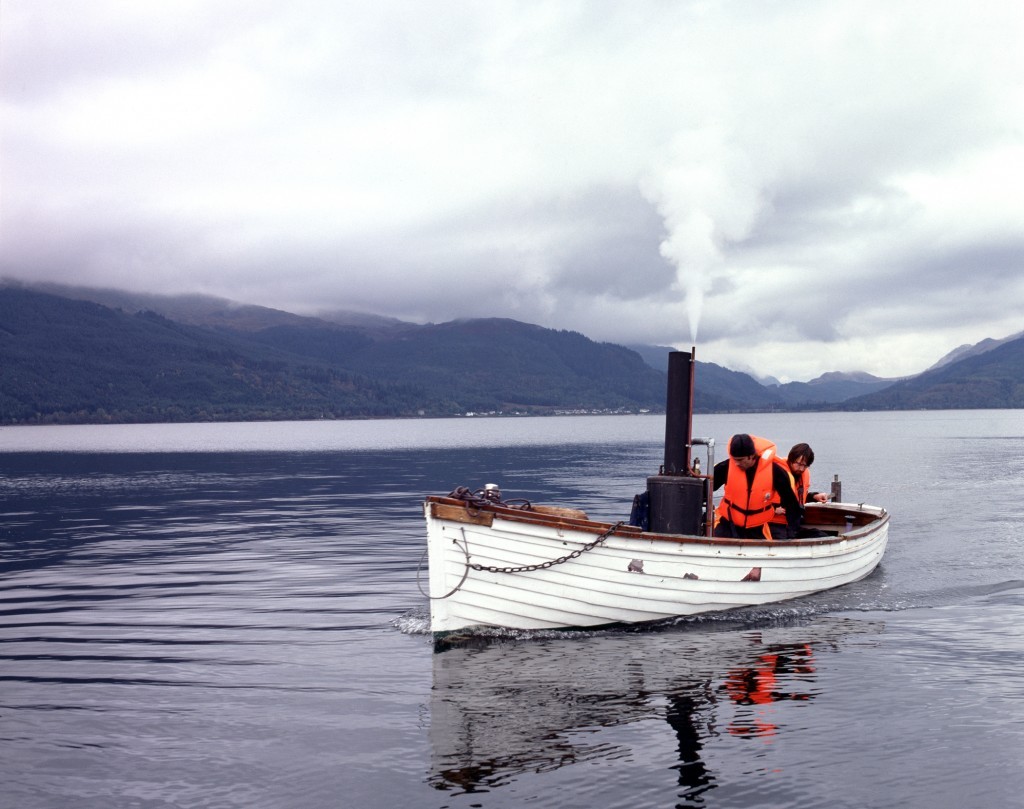
Simon Starling
Autoxylopyrocycloboros, 2006
38 color transparencies, Götschmann medium format slide projector, and flight case
4 minutes
Projected dimensions variable
Courtesy the artist and The Modern Institute/Toby Webster Ltd, Glasgow
Autoxylopyrocycloboros, 2006
38 color transparencies, Götschmann medium format slide projector, and flight case
4 minutes
Projected dimensions variable
Courtesy the artist and The Modern Institute/Toby Webster Ltd, Glasgow
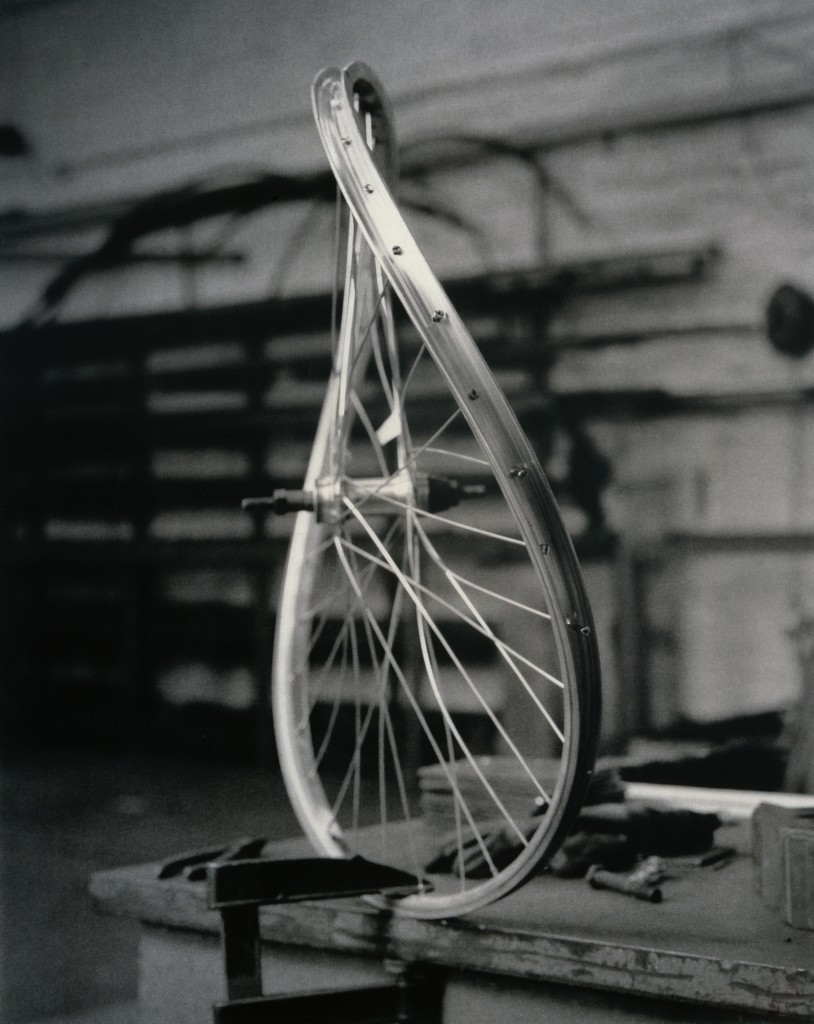
Simon Starling
Bicycle Wheel (Failed), 2003-04
Platinum/palladium print
12 5/8 x 10 1/4 in. (32 x 26 cm)
Courtesy of the artist and Casey Kaplan, New York
Bicycle Wheel (Failed), 2003-04
Platinum/palladium print
12 5/8 x 10 1/4 in. (32 x 26 cm)
Courtesy of the artist and Casey Kaplan, New York
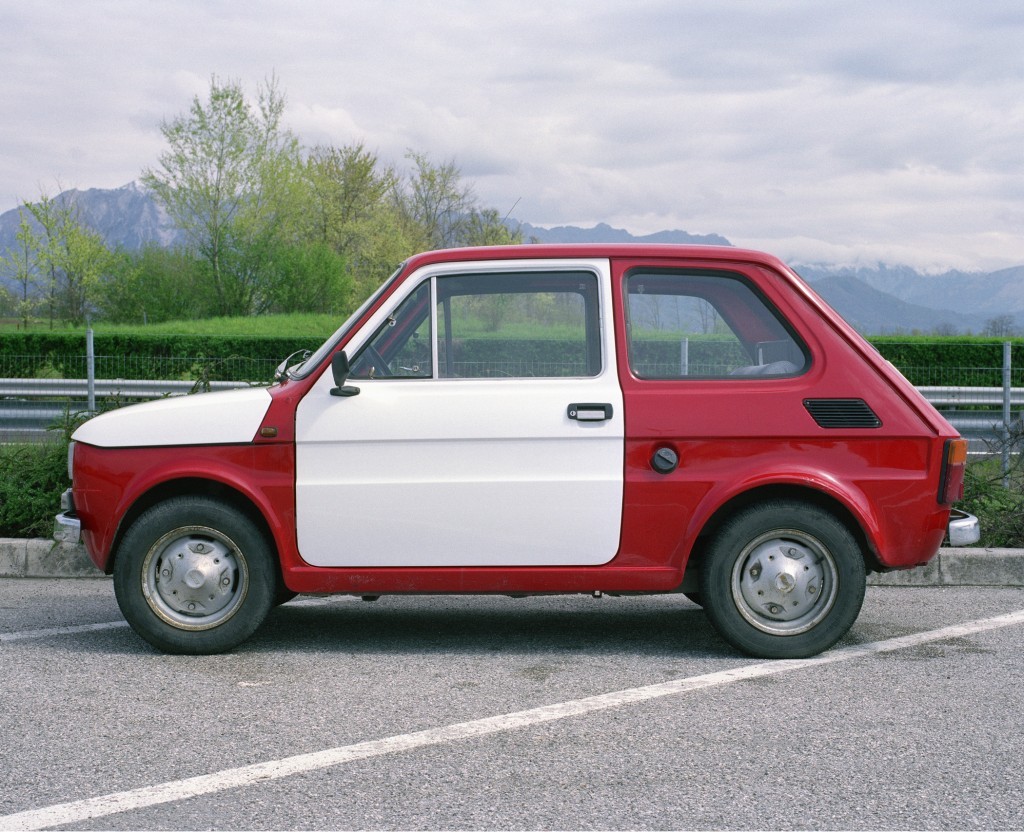
Simon Starling
Flaga 1972-2000 (A Fiat Produced in Turin, Italy, in 1974 And Customised Using Parts Manufactured And Fitted in Poland, Following a Journey of 1290 km from Turin to Cieszyn), 2002
Fiat 126
78 3/4 x 124 x 63 in. (200 x 315 x 160 cm)
Fondazione Sandretto Re Rebaudengo, Turin
Flaga 1972-2000 (A Fiat Produced in Turin, Italy, in 1974 And Customised Using Parts Manufactured And Fitted in Poland, Following a Journey of 1290 km from Turin to Cieszyn), 2002
Fiat 126
78 3/4 x 124 x 63 in. (200 x 315 x 160 cm)
Fondazione Sandretto Re Rebaudengo, Turin
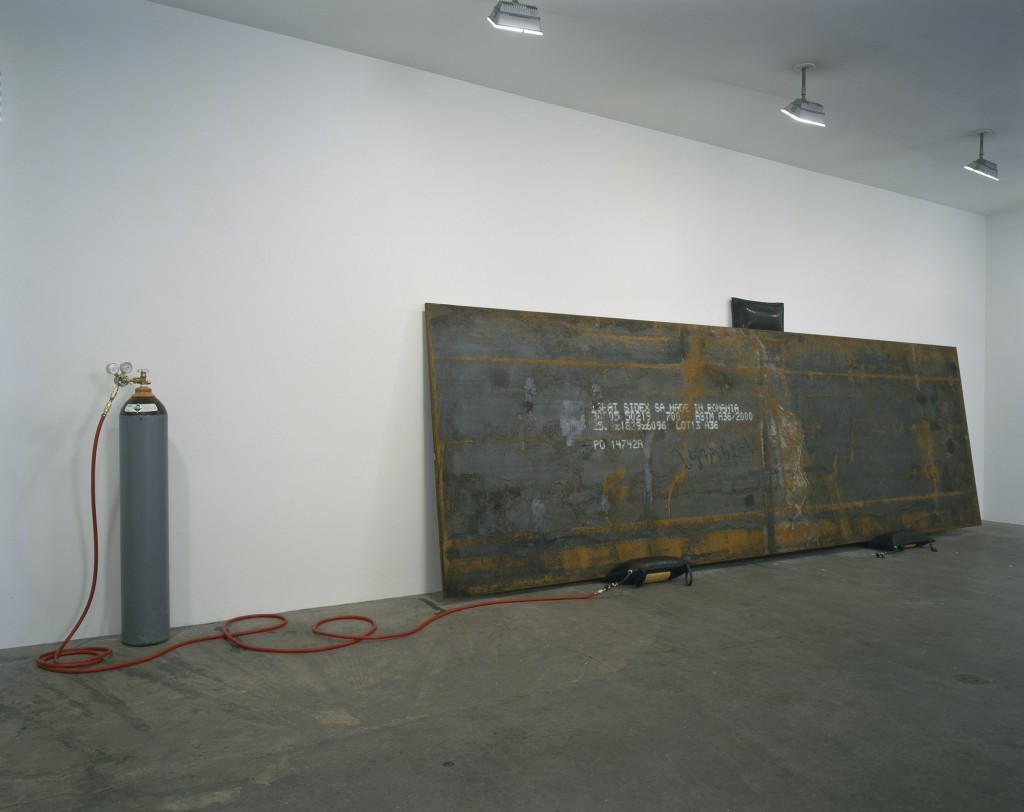
Simon Starling
Bird In Space, 2004, 2004
Imported Romanian steel plate, inflatable jacks, helium
Steel: 72 x 240 x 1 in. (182.9 x 609.6 x 2.54 cm)
Seattle Art Museum (“SAM”), Margaret E. Fuller Fund, and gift of Jeffrey and Susan Brotman, Jeff and Judy Greenstein, Lyn and Jerry Grinstein, and Virginia and Bagley Wright in honor of Jon and Mary Shirley, in honor of the 75th Anniversary of the Seattle Art Museum
Photo: Erma Estwick, courtesy of the artist and Casey Kaplan, NY
Bird In Space, 2004, 2004
Imported Romanian steel plate, inflatable jacks, helium
Steel: 72 x 240 x 1 in. (182.9 x 609.6 x 2.54 cm)
Seattle Art Museum (“SAM”), Margaret E. Fuller Fund, and gift of Jeffrey and Susan Brotman, Jeff and Judy Greenstein, Lyn and Jerry Grinstein, and Virginia and Bagley Wright in honor of Jon and Mary Shirley, in honor of the 75th Anniversary of the Seattle Art Museum
Photo: Erma Estwick, courtesy of the artist and Casey Kaplan, NY
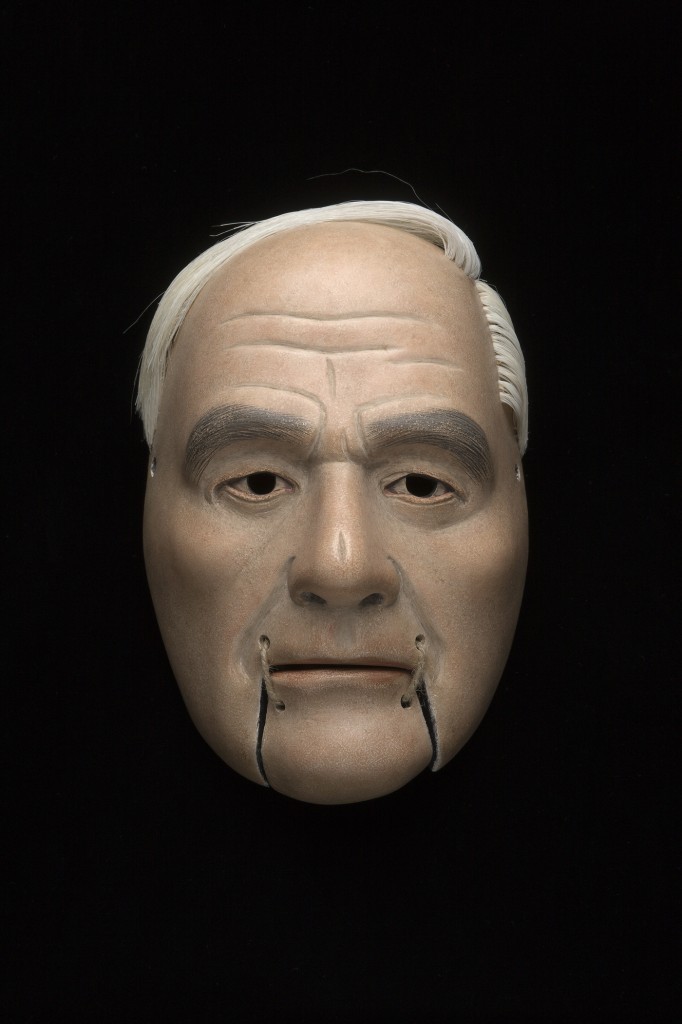
Simon Starling
The Hat Maker/Henry Moore From Project for a Masquerade (Hiroshima), 2010-2011
16 mm film transferred to digital (25 minutes, 45 seconds), wooden masks, cast bronze masks, bowler hat, metals stands, suspended mirror, suspended screen, HD projector, media player, and speakers
Dimensions variable
Rennie Collection, Vancouver
Mask maker: Yasuo Miichi, Osaka
Photo: Ruth Clark
The Hat Maker/Henry Moore From Project for a Masquerade (Hiroshima), 2010-2011
16 mm film transferred to digital (25 minutes, 45 seconds), wooden masks, cast bronze masks, bowler hat, metals stands, suspended mirror, suspended screen, HD projector, media player, and speakers
Dimensions variable
Rennie Collection, Vancouver
Mask maker: Yasuo Miichi, Osaka
Photo: Ruth Clark
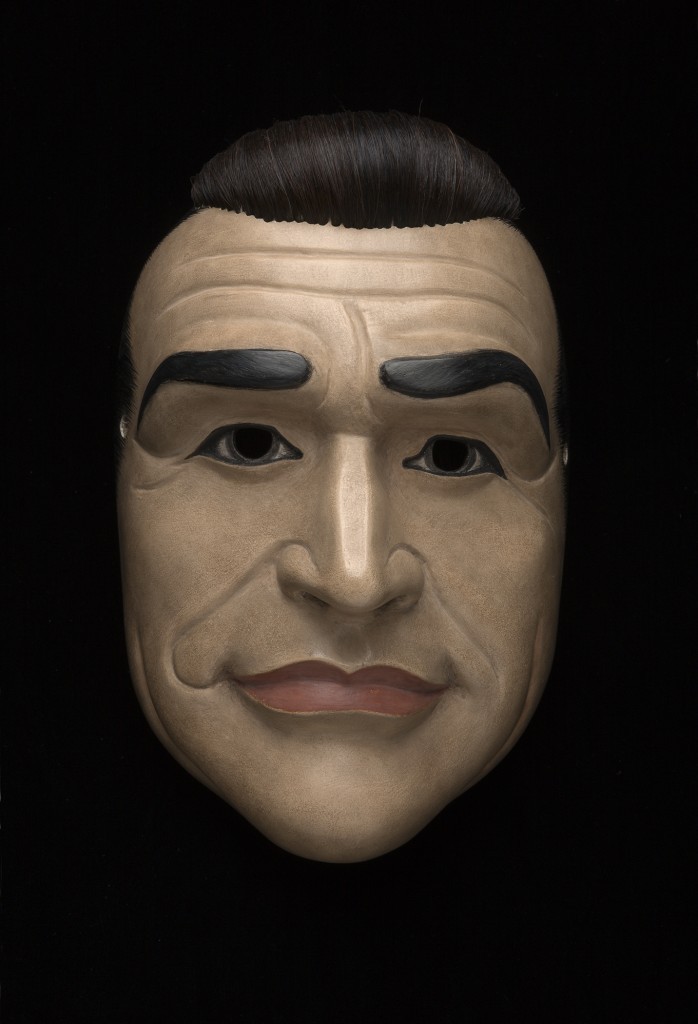
Simon Starling
Kichiji – A Gold Merchant/James Bond From Project for a Masquerade (Hiroshima), 2010-2011
16 mm film transferred to digital (25 minutes, 45 seconds), wooden masks, cast bronze masks, bowler hat, metals stands, suspended mirror, suspended screen, HD projector, media player, and speakers
Dimensions variable
Rennie Collection, Vancouver
Mask maker: Yasuo Miichi, Osaka
Photo: Ruth Clark
Kichiji – A Gold Merchant/James Bond From Project for a Masquerade (Hiroshima), 2010-2011
16 mm film transferred to digital (25 minutes, 45 seconds), wooden masks, cast bronze masks, bowler hat, metals stands, suspended mirror, suspended screen, HD projector, media player, and speakers
Dimensions variable
Rennie Collection, Vancouver
Mask maker: Yasuo Miichi, Osaka
Photo: Ruth Clark
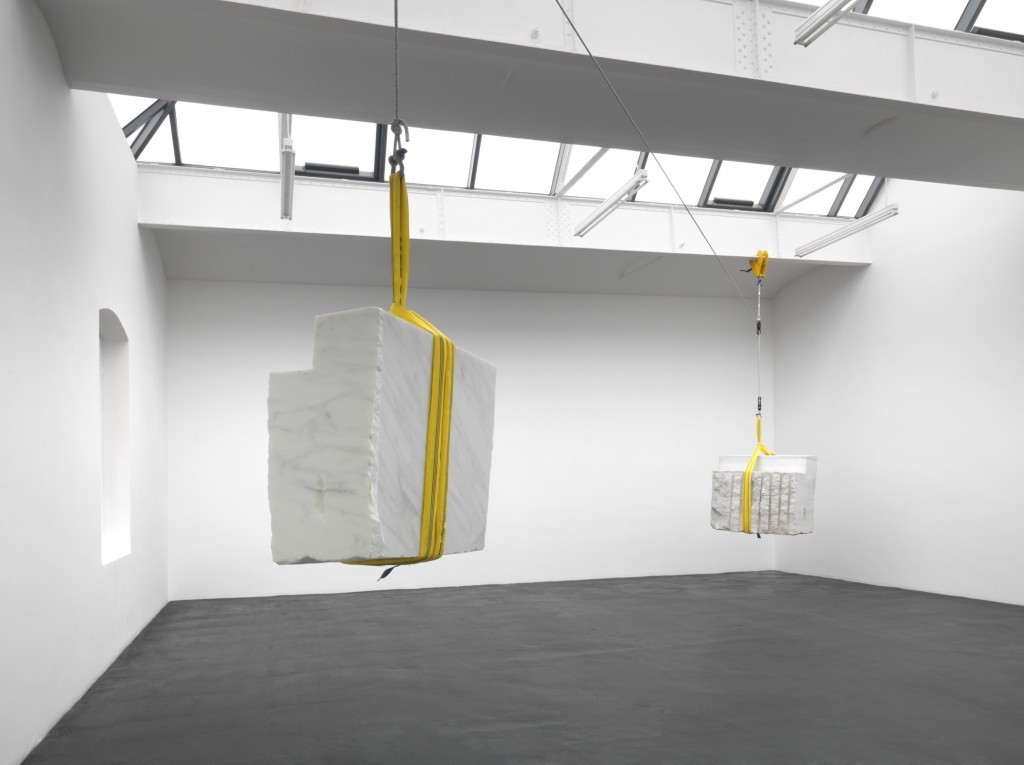
Simon Starling
The Long Ton, 2009
Chinese marble block, CNC milled Carrara marble block, pulley system, clamps, rope, and shackles
Two parts, approximately: 35 x 47 x 19 in. (90 x 120 x 50 cm), 23 x 29 x 12 in. (59 x 74 x 31 cm)
Installed dimensions variable
Installation view, neugerriemschneider, Berlin, 2009
Courtesy the artist and neugerriemschneider, Berlin
Photo: Jens Ziehe
The Long Ton, 2009
Chinese marble block, CNC milled Carrara marble block, pulley system, clamps, rope, and shackles
Two parts, approximately: 35 x 47 x 19 in. (90 x 120 x 50 cm), 23 x 29 x 12 in. (59 x 74 x 31 cm)
Installed dimensions variable
Installation view, neugerriemschneider, Berlin, 2009
Courtesy the artist and neugerriemschneider, Berlin
Photo: Jens Ziehe
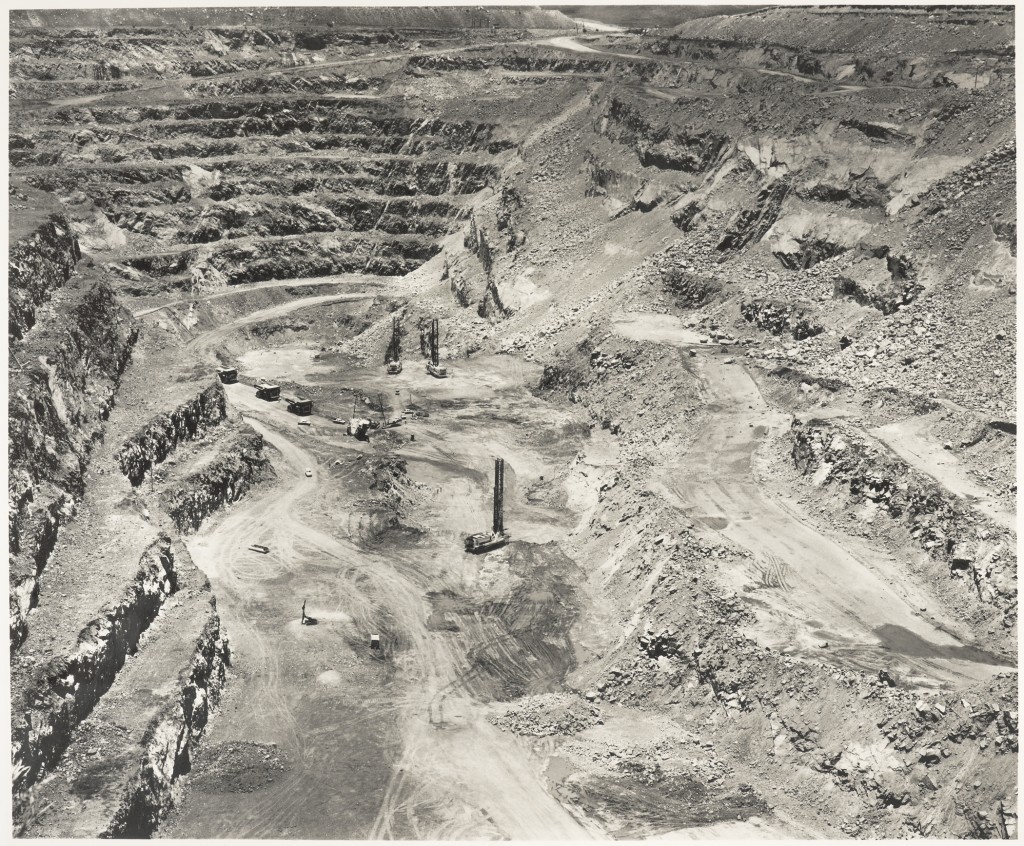
Simon Starling, Detail view, One Ton II (Five Handmade Platinum/Palladium Prints of The Anglo American Platinum Mine At Potgieterus, South Africa, Produced Using as Many Platinum Group Metal Salts as Can Be Produced From One Ton Of Ore), 2005
Five platinum/palladium prints framed in acrylic boxes
Each: 25 9/16 x 33 7/16 in. (65 x 85 cm)
Rennie Collection, Vancouver
Photo: José Luis Gutiérrez
Five platinum/palladium prints framed in acrylic boxes
Each: 25 9/16 x 33 7/16 in. (65 x 85 cm)
Rennie Collection, Vancouver
Photo: José Luis Gutiérrez
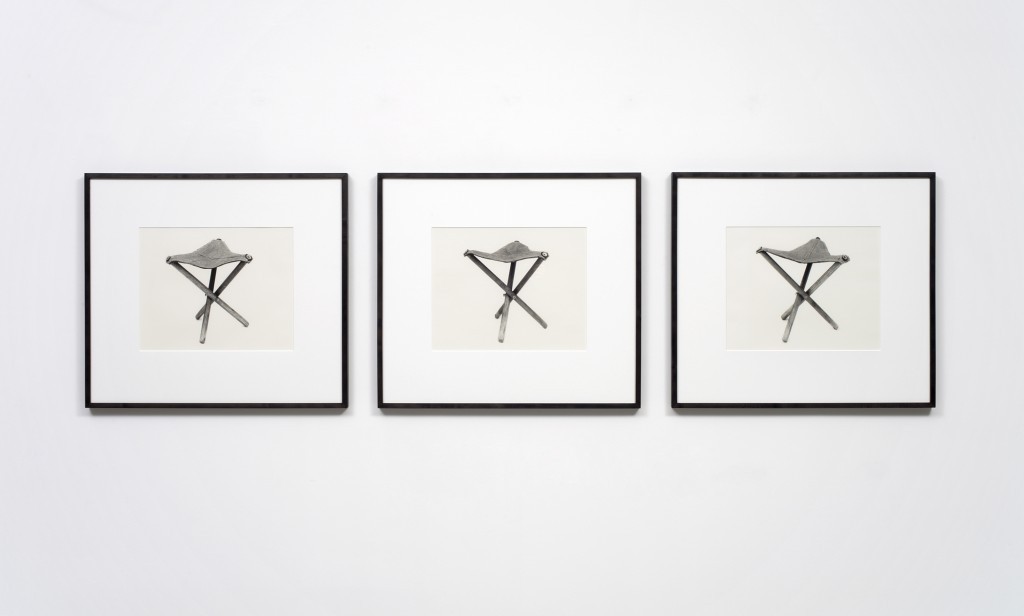
Simon Starling
Home-Made Three-Legged Stool, 2004
3 platinum/palladium prints
Each: 33 x 40 in. (83.8 x 101.6 cm)
Courtesy of the artist and Casey Kaplan, New York
Home-Made Three-Legged Stool, 2004
3 platinum/palladium prints
Each: 33 x 40 in. (83.8 x 101.6 cm)
Courtesy of the artist and Casey Kaplan, New York
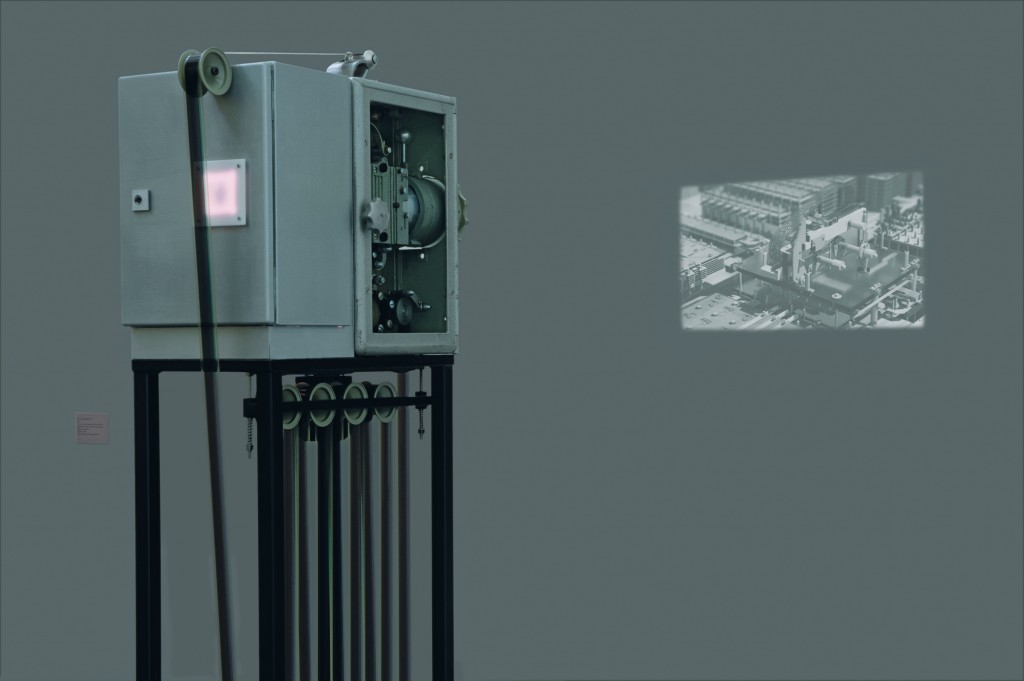
Simon Starling
D1 – Z1 (22,686,575:1), 2009
35 mm black-and-white film, sound
Dresden D1 projector, loop machine, amplifier, speakers
30 seconds (looped)
Courtesy the artist and Casey Kaplan, New York
Installation view, Musée d'Art Contemporain du Val-de-Marne, 2009
Photo: Marc Domage
D1 – Z1 (22,686,575:1), 2009
35 mm black-and-white film, sound
Dresden D1 projector, loop machine, amplifier, speakers
30 seconds (looped)
Courtesy the artist and Casey Kaplan, New York
Installation view, Musée d'Art Contemporain du Val-de-Marne, 2009
Photo: Marc Domage
SIMON STARLING
Metamorphology
5 February – 10 May 2015
Summary
Metamorphology presents some fifteen pieces – sculptures, photographs, installations and films – that draw on the idea of metamorphosis and a conception of the transformative power of art. Behind each of these works is a narrative that exposes sometimes serendipitous links between seemingly disparate people and places, times and events. Starling pursues a fundamentally research-based practice that often centres around key figures in early twentieth-century art history.
At the centre of Simon Starling’s practice is an interest in the materials and tools of his trade (limestone, marble, platinum, silver, steel and wood), as well as the economies of production, reproduction and circulation of resources, energies, images and matter. The title of the exhibition, which brings together works in film and photography, sculpture and installation, draws on the idea of metamorphosis and a conception of the transformative potential of art.
Behind each of Starling’s works is a narrative that exposes sometimes serendipitous links between seemingly disparate people and places, times and events. Pursuing a fundamentally research-based practice that often centres around key figures in early twentieth-century art history—Henry Moore, Constantin Brancusi, Marcel Duchamp—the artist uncovers littleknown moments that assume resonance as each piece takes form, as though the works were attempting to transmit an ever thickening plot. The works themselves are triggers for investigation, pieces in a puzzle, or function as traces of sometimes rather complicated narrative trajectories.
Titles and wall cards are essential in order to grasp the full resonance of each piece. The exhibition includes large-scale sculptures such as Bird in Space, 2004, 2004, a two-ton slab of Romanian steel that intertwines the story of a court battle around the status of a 1923 sculpture by Brancusi and the imposing of a significant tax hike on foreign steel by George W. Bush in 2004; The Long Ton, 2009, which is composed of two blocks of marble, one Italian, the other Chinese, suspended from the ceiling of the gallery; and Flaga 1972–2000, 2002, a red-andwhite Fiat 126 hung on the wall. Starling’s foray into film, which has allowed him to integrate his unique kind of storytelling, is manifested in the installation Project for a Masquerade (Hiroshima), 2010-2011, which conflates such disparate characters as Henry Moore, James Bond, Sir Anthony Blunt and Colonel Sanders, alongside a Japanese Noh mask maker.
Photography is an integral part of Starling’s practice, and his suite of thirty-six gelatin silver prints entitled Pictures for an Exhibition exemplifies two levels of investigation: one based in research and the other photographic. Prompted by two photographs of an exhibition of sculptures by Brancusi at the Arts Club of Chicago in 1927, Starling set out to track the provenance of each work and photograph it on location in the homes of private collectors, museum vaults and exhibition spaces.
Simon Starling was born in 1967 in Epsom, United Kingdom, and lives and works in Copenhagen. He studied at the Glasgow School of Art, and it was in that city that he gained international recognition. He has exhibited extensively in Europe, Asia and Australia, often producing site-responsive works. He was the winner of the 2005 Turner Prize and a nominee for the 2004 Hugo Boss Prize.
Lesley Johnstone, Curator
Metamorphology
5 February – 10 May 2015
Summary
Metamorphology presents some fifteen pieces – sculptures, photographs, installations and films – that draw on the idea of metamorphosis and a conception of the transformative power of art. Behind each of these works is a narrative that exposes sometimes serendipitous links between seemingly disparate people and places, times and events. Starling pursues a fundamentally research-based practice that often centres around key figures in early twentieth-century art history.
At the centre of Simon Starling’s practice is an interest in the materials and tools of his trade (limestone, marble, platinum, silver, steel and wood), as well as the economies of production, reproduction and circulation of resources, energies, images and matter. The title of the exhibition, which brings together works in film and photography, sculpture and installation, draws on the idea of metamorphosis and a conception of the transformative potential of art.
Behind each of Starling’s works is a narrative that exposes sometimes serendipitous links between seemingly disparate people and places, times and events. Pursuing a fundamentally research-based practice that often centres around key figures in early twentieth-century art history—Henry Moore, Constantin Brancusi, Marcel Duchamp—the artist uncovers littleknown moments that assume resonance as each piece takes form, as though the works were attempting to transmit an ever thickening plot. The works themselves are triggers for investigation, pieces in a puzzle, or function as traces of sometimes rather complicated narrative trajectories.
Titles and wall cards are essential in order to grasp the full resonance of each piece. The exhibition includes large-scale sculptures such as Bird in Space, 2004, 2004, a two-ton slab of Romanian steel that intertwines the story of a court battle around the status of a 1923 sculpture by Brancusi and the imposing of a significant tax hike on foreign steel by George W. Bush in 2004; The Long Ton, 2009, which is composed of two blocks of marble, one Italian, the other Chinese, suspended from the ceiling of the gallery; and Flaga 1972–2000, 2002, a red-andwhite Fiat 126 hung on the wall. Starling’s foray into film, which has allowed him to integrate his unique kind of storytelling, is manifested in the installation Project for a Masquerade (Hiroshima), 2010-2011, which conflates such disparate characters as Henry Moore, James Bond, Sir Anthony Blunt and Colonel Sanders, alongside a Japanese Noh mask maker.
Photography is an integral part of Starling’s practice, and his suite of thirty-six gelatin silver prints entitled Pictures for an Exhibition exemplifies two levels of investigation: one based in research and the other photographic. Prompted by two photographs of an exhibition of sculptures by Brancusi at the Arts Club of Chicago in 1927, Starling set out to track the provenance of each work and photograph it on location in the homes of private collectors, museum vaults and exhibition spaces.
Simon Starling was born in 1967 in Epsom, United Kingdom, and lives and works in Copenhagen. He studied at the Glasgow School of Art, and it was in that city that he gained international recognition. He has exhibited extensively in Europe, Asia and Australia, often producing site-responsive works. He was the winner of the 2005 Turner Prize and a nominee for the 2004 Hugo Boss Prize.
Lesley Johnstone, Curator
